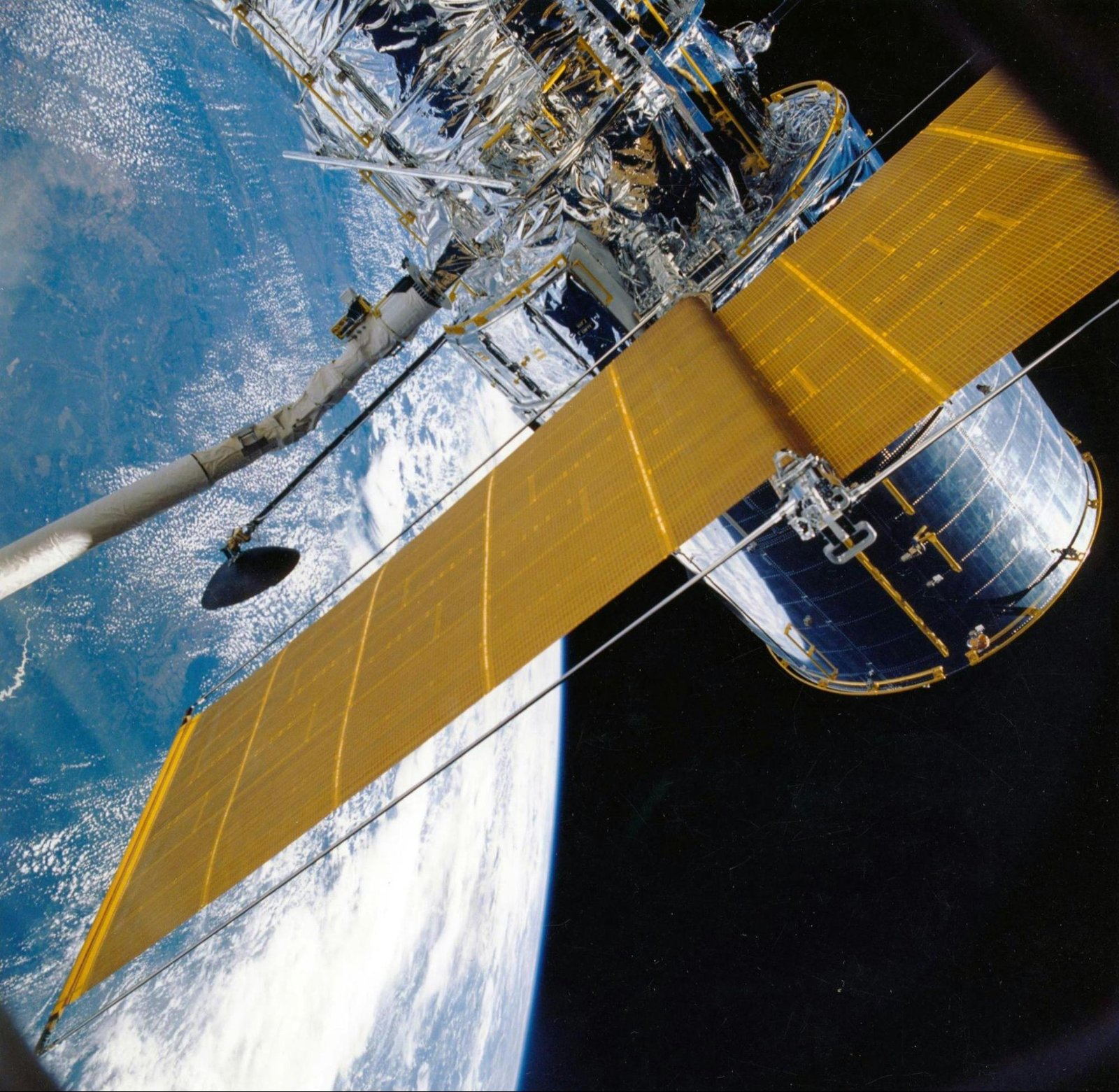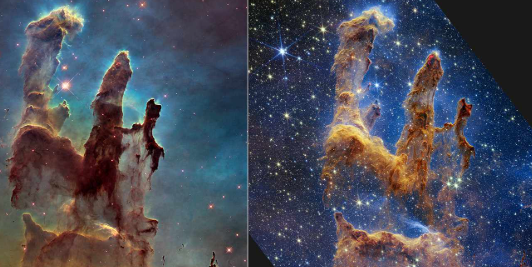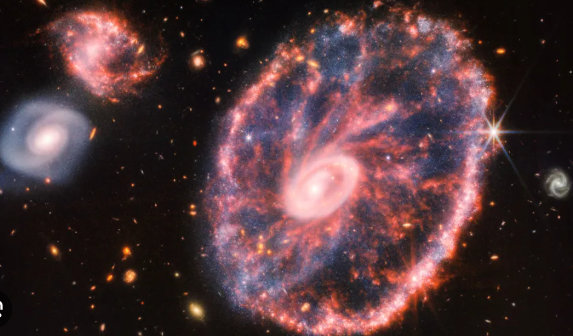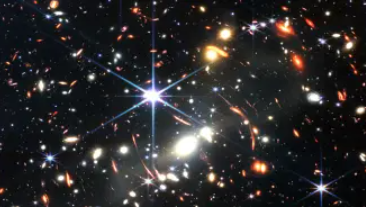Hubble Scope vs James Webb Telescope: Mind-Blowing Differences You Need to Know!
For over three decades, the Hubble Space Telescope has mesmerized us with breathtaking images of deep space, uncovering cosmic mysteries and expanding our understanding of the universe. But now, a new giant has entered the scene, the James Webb Space Telescope (JWST). Known as Hubble’s successor, Webb promises to peer even further into the cosmos, revealing secrets hidden in the depths of time.
But how do these two space telescopes compare? What makes JWST different from Hubble? How does infrared technology revolutionize space exploration? And perhaps most intriguingly, will Webb’s images be as stunning as Hubble’s legendary snapshots of galaxies and nebulae?
In this article, we’ll break down the key differences between these two groundbreaking observatories, exploring their designs, imaging capabilities, and the scientific discoveries they’ve unlocked. We’ll also take a deep dive into some of the most breathtaking images ever captured, comparing Hubble’s iconic shots with Webb’s revolutionary new perspectives.
By the end, you'll not only understand how far the James Webb Telescope can see, but you’ll also appreciate why we are truly entering a new golden age of astronomy.
What is the Hubble Space Telescope?

The Hubble Space Telescope was launched by NASA on 24 April 1990. This telescope changed the way we perceived the universe. It allowed us to deep dive into the expanding and limitless universe with millions of galaxies. It has captured crystal clear and captivating images of deep space which are free of any kind of distortions in space. It has contributed to discoveries such as.
It is equipped with advanced tools like visible, ultraviolet, and near infrared cameras. Hubble Space has captured some breathtaking images of space, like the pillars of creation. However, the best was yet to come when NASA launched a technological marvel “James Webb Telescope”.
What is the Marvel of James Webb Telescope?

The James Webb Telescope is NASA’s most advanced space telescope till date. It was launched on 25 December 2021. It is basically the successor of the Hubble Telescope. It features heat radiation astronomy technology which allows it to see farther and deeper into space. It has a coated mirror which is three times the size of the Hubble Space Telescope. It has the capability to detect faint lights from the earliest galaxies which were born after the bigbang.
It is located at more than a million kilometers from Earth at the Lagrange Point 2, it operates in extreme cold to maximize its sensitivity. Its groundbreaking capabilities enable it to observe various atmospheres, stars, and science of how galaxies evolve, making it one of the most ambitious scientific projects in history.
What are the Key Differences Between James Webb and Hubble Space Telescope
This comparison table highlights key differences between both space telescopes:
| James Webb | Hubble |
| Location | It is at Lagrange at a point in space, 1.5 KM away from Earth | At low Earth Altitude of 547 km |
| Telescope Size | The size of a Tennis Court, it has large sun shield | It is the size of a school bus |
| Light Observed | It observes near and mid infrared light | Ultra violet, visible, near infrared |
| Maintenance | It is too far for maintenance, it has extraordinary design test for any kind of circumstances | It has been maintained over the year, it is in earth orbital |
| Telescope Life | Expected to last for 10 years, depending on the fuel consumption for orbit adjustment | 15 years, but has been maintained to last till 2030 |
| Scientific Goals | Find out about early universes, exoplanet and star formation, black holes | Galaxies, nebulae, black holes, dark energy |
Know How Webb Uses Infrared Lights to Observe the Universe?

Infrared light is a powerful tool for astronomers because it allows them to see parts of the universe that are hidden from visible light telescopes. The James Webb is designed specifically to capture heat radiation, helping scientists uncover distant galaxies, newborn stars, and exoplanets that would otherwise be invisible to Hubble space or other telescopes.
What is Infrared Light?
Infrared light is a type of electromagnetic radiation with longer wavelengths than visible light but shorter than radio waves. Although humans cannot see infrared, we can feel it as heat. Common sources of infrared light include:
- The Sun
- Fire
- Warm objects, including people
- In space, stars, planets, and galaxies also emit infrared radiation, which allows telescopes like JWST to detect them.
How JWST works with Infrared to Explore the Universe?
Unlike Hubble, which mostly captures visible and ultraviolet light, JWST is optimized for infrared astronomy. Its gold-coated mirror and advanced infrared cameras allow it to:
- See the first galaxies ever formed
- Analyze exoplanet atmospheres for signs of life
- Reveal how stars and planets are born
- Infrared observations are revolutionizing astronomy, and JWST is at the forefront of this discovery.
What are the Benefits of Infrared Observations used by James Webb
- Sees Through Dust & Gas
- Detects Cooler Objects
- It looks Back in Time to see the oldest galaxies that formed just after the Big Bang.
- Finds Hidden Structures like black holes, dying stars, and planetary system
Design and Structure of Webb and the Hubble Telescope
The Hubble
1. Overall Design
Hubble looks like a giant cylindrical satellite with a length of 13.2 meters (43.5 feet) and a diameter of 4.2 meters (14 feet). It has solar panels that provide power and a large aperture at one end for capturing light.
2. Primary Mirror
- Size: 2.4 meters (7.9 feet) in diameter
- Material: Polished glass coated with aluminum and magnesium fluoride
- Purpose: Reflects and focuses light onto scientific instruments
3. Scientific Instruments
Hubble is equipped with multiple cameras and spectrographs that capture visible, ultraviolet, and some infrared light. These instruments allow it to take high-resolution images of distant galaxies, nebulae, and planets.
The JWST
1. Overall Design
JWST has a completely different design compared to Hubble. Instead of a tube-shaped structure, it has:
- A huge segmented mirror
- A five-layer sunshield
- Foldable parts for compact launch and deployment in space
2. Primary Mirror
- Size: 6.5 meters (21.3 feet) in diameter (nearly 3x larger than Hubble’s mirror)
- Material: Beryllium coated in gold to enhance infrared reflection
- Purpose: Collects infrared light from the early universe, distant galaxies, and exoplanets
3. Sunshield
- Size: As big as a tennis court
- Layers: Five ultra-thin layers made of Kapton
- Purpose: Protects the telescope from the Sun’s heat and keeps its instruments extremely cold for observation through heat radiation
How Far Can JWST See?

So our universe is 13.8 billion years old. We can easily assume that the farthest galaxy is not more than 13.8 billion years away. The scientists and researchers are expecting that James Webb will see a 100 million years old universe, in that time, first stars and galaxies were found, hence, it will be able to see early galaxies and supernovae produced by the universe's first stars.
Is JWST a Successor or Replacement for Hubble?
James Webb is a successor telescope and there is no doubt in that. Both are operating at the same time in different locations. Webb is starting from where Hubble left. Researchers claim that there are galaxies in the universe that are moving and fleeing away fast. Webb will help us catch those galaxies that were born 200 million years after the big bang, through its unique engineering.
Challenges Faced by Hubble and Webb
When the Hubble was sent to space, the images it sent were too blurry to understand anything. It was due to a little flatness as much as human hair. But the telescope was in the range to Earth, the issue was fixed by the astronauts. The telescope is constantly maintained and repaired by astronauts’ teams.
James Webb’s troubles were limited to before the launch, because it was costing them $5 billion and was planned for launch in 2014 but it got delayed until 2021 and cost rose to $10 billion. They wanted to make sure no errors were there because it was going to be out of human reach once it started operations. As a result all the challenges were resolved in the pre-launch phase.
How Do Their Scientific Goals Differ?
The Hubble’s mission is to:
- To observe the characteristics of Celestial bodies
- To find out the nature of processes in galactic and stellar bodies
- To study in detail the past of universe and how it evolved
- To make sure physical laws are universal
- To act as space research facility for optical astronomy
The James Webb’s Mission is to:
- To study big bang and the galaxies and stars forms after it
- To find out how did the galaxies evolved till the date
- To study how star formed and how they got the formation of planetary systems
- To gauge the physical and chemical properties of planet to and look into the possibilities of life on those planets
How Capable are JWST and Hubble in Image Capturing?

The Images taken by Webb may have equal or higher resolution in comparison to images taken by Hubble.
Since the human eye cannot see infrared and can make an object appear totally different. Webb’s images will be artificially colored. Scientists also do the same for Hubble's images.
How Big is the JWST Deep Field Image?

Observations that are long lasting for a certain region of the sky which is determined to show faint objects by getting light from for an appropriately long time are known as Deep Field observations. The Deeper the observation or long exposure duration is, the fainter the objects will appear on the images.
Which is more Powerful Hubble or Webb?
The Webbs image taking capability is 6 times the light gathering capability of Hubble’s primary mirror. In simple words, Webb sees what Hubble cannot see such as galaxies and stars that formed closer to the formation of the universe.
Can James Webb Take Pictures of Earth?
No, James Webb Cannot take pictures of Earth because it is 1.5 million miles away from Earth, since web uses heat radiation to take pictures of distant objects, it needs to be protected from heat, thus it if was placed in a direction to Earth to take pictures, it would also have to point towards the Sun, as a result Sun’s heat would overheat its instruments. While Hubble is in orbital Earth and can take pictures of Earth anytime. It is also not affected by the Sun's Heat.
Has James Webb Found Aliens?
No, it has not found aliens yet but scientists claim that they have uncovered some promising signs of aliens in the last few years. They claim to have found all important carbon based molecules on an exoplanet called K2-18 b. Some have also expressed doubt on this research and furthermore research will be done to support the claims.
A New Era of Space Exploration
The Hubble Space Telescope and the James Webb Space Telescope represent two monumental achievements in our quest to understand the universe. Hubble, with its breathtaking visible-light images, has revolutionized astronomy for over 30 years, giving us stunning views of galaxies, nebulae, and distant planets. Its contributions to our understanding of dark energy, black holes, and the age of the universe have been groundbreaking.
However, the James Webb Telescope is now pushing the boundaries even further. Its advanced technology allows it to peer through cosmic dust, detect the earliest galaxies, and analyze exoplanet atmospheres for signs of life. Positioned 1.5 million kilometers from Earth, Webb is an engineering marvel that will answer some of the deepest questions about the universe’s origins.
While both telescopes serve different purposes, they complement each other in an ongoing mission to uncover cosmic mysteries. Hubble has shown us the universe as it is, while Webb is revealing the universe as it was. Together, they mark a golden age of astronomy, promising discoveries that will reshape our understanding of space and time.

Be the first to write a review!